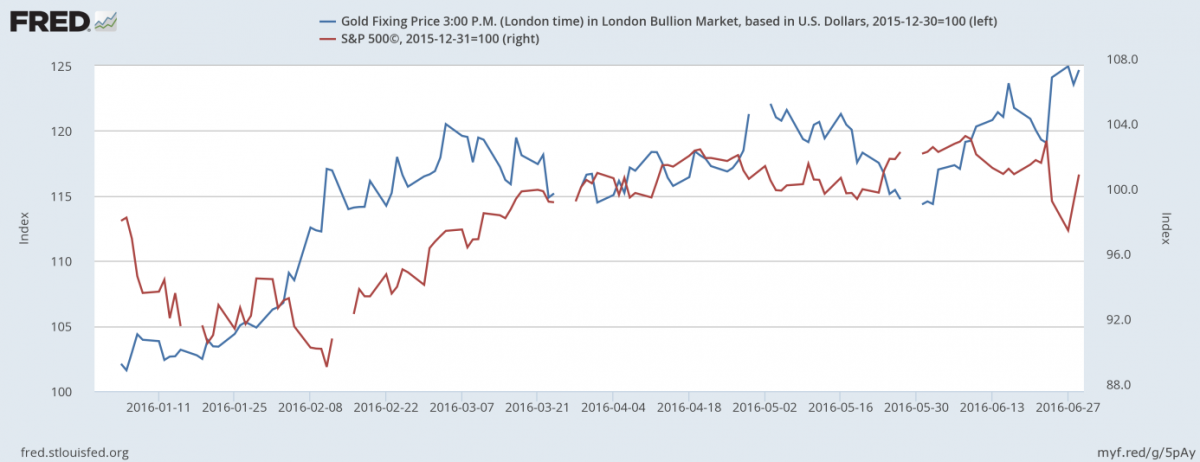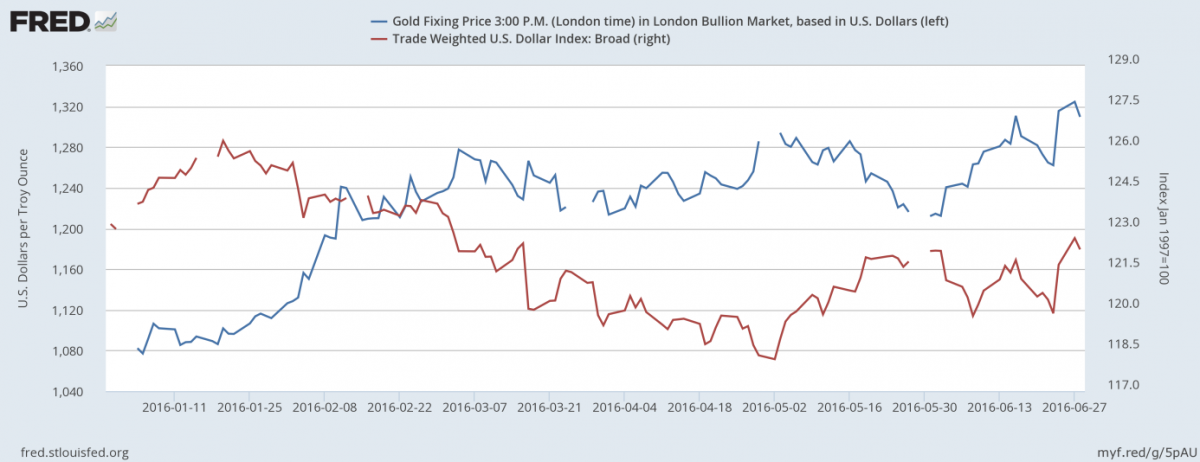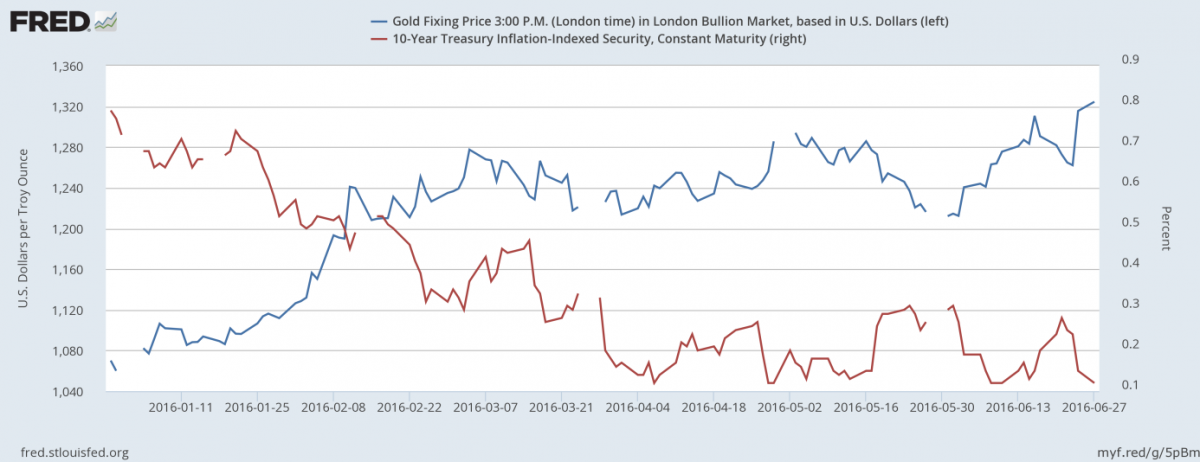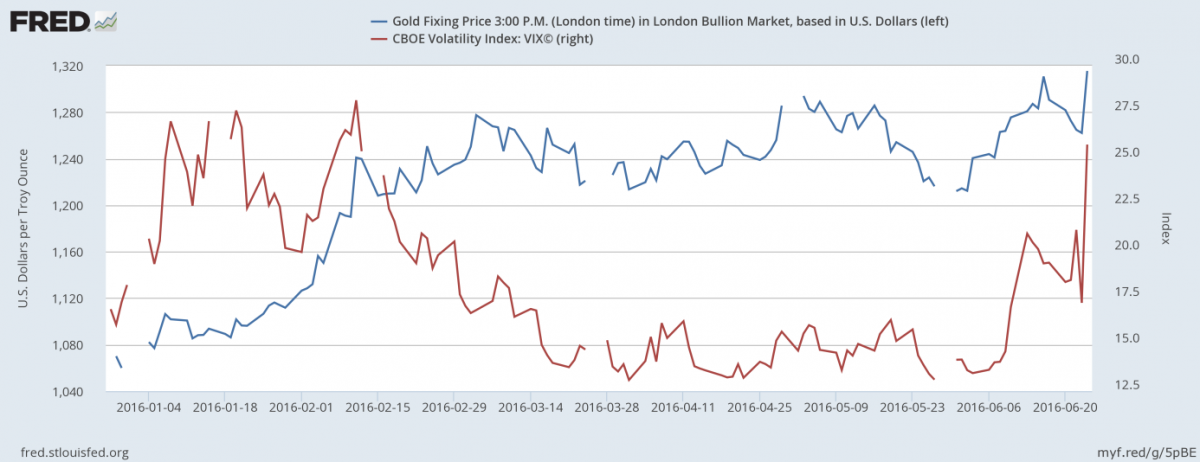Gold Price Soars 25% In First 6 Months Of 2016
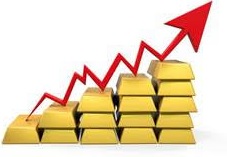
The first half of the year is behind us. How did gold perform in the past six months?
Gold Is Among The Best Performing Assets In H1
The two first quarters of 2016 were excellent for the shiny metal. Gold was one of the best-performing assets at that time. It gained about 25 percent, much more that the US stocks, which rose just about 3 percent (as one can see in the chart below).
Chart 1: The price of gold (blue line, left axis, London P.M. Fix, index) and the S&P500 (red line, right axis, index) over the last six months.
Gold And The US Dollar
What were the fundamental factors behind the gold’s rally in the first half of the year? The next chart shows that the price of gold was negatively correlated with the US dollar. The greenback was on a downward trend until mid-May, so gold could rise. However, both assets fluctuated in tandem in the second half of June due to fears of Brexit.
Chart 2: The price of gold (blue line, left axis, London P.M. fix) and the broad trade-weighted US Dollar Index (red line, right axis) over the last six months.
Gold And Real Interest Rates
The third chart suggests that the decline in real interest rates (due to the flatter expected path of the Federal Funds Rate) also contributed significantly to the gold’s rally. The mirror-image symmetry between the price of gold and real interest rates confirms that bullion is a monetary metal traded in the medium and long-term to a large extent on the Fed’s actions and US macroeconomic factors.
Chart 3: The price of gold (blue line, left axis, London P.M. Fix) and real interest rates (red line, right axis, 10-year inflation-indexed Treasuries) over the last six months.
Other Key Factors In The Gold Market In H1 2016
Please recall that gold surged in January due to stock market turmoil caused by a Chinese slowdown and increasing credit spreads. In February, the yellow metal continued its rally on the concerns triggered by the introduction of negative interest rates by the Bank of Japan. Gold corrected in March, as financial markets calmed down. Then, it rose again in April, despite the increase in real interest rates in the first half of the month. But the US dollar continued its decline. In May, both the greenback and real interest rates rebounded. Consequently, the price of gold fell. The drop was amplified by the surprisingly hawkish minutes of the Fed’s April meeting released on May 18. The declines did not last long, as the May disastrous (and surprising) payrolls and the following dovish Yellen’s comments boosted the gold price in June. The gains were strengthened by dovish June FOMC economic projections and the surprising outcome of the Brexit vote. The British referendum triggered a surge in uncertainty and market expectations of near-term volatility, which helped gold to rally, as one can see in the chart below.
Chart 4: The price of gold (blue line, left axis, London P.M. Fix) and CBOE Volatility Index (red line, right axis) over the last six months.
Conclusions
The bottom line is that gold prices added to Q1 gains in the second quarter of 2016 – thus outshining the market in H1 2016 by appreciating in all currencies. The main factors behind gold’s excellent performance were: the Fed’s inaction, a weak greenback (until May and later, post-Brexit vote), low real interest rates and elevated uncertainty. Let’s keep in mind that the fundamental factors are the force that can help to push the market in a given direction, but only assuming that the emotional status of market participants is in tune with this direction. Otherwise, the reaction will be temporary and likely to reverse within days, weeks or (in case of bigger rallies) months. For instance, the fundamental situation was not very bad for gold (in fact, it was favorable) between 2011 and 2014 – and yet, gold declined substantially during that time. Technical patterns and analogies to similar situations from the past also need to be taken into account, while making an investment decision.
Moving back to the fundamental factors, the second half of the year seems to be positive, as Brexit (as well as European banking and US elections) could entail even more volatility in the months ahead, even lower interest rates in the US (due to the flight to safety) with no hikes in sight. However, when Brexit fears ease and the risks appetite returns, the price of gold may decline. It is not a foregone conclusion, as the fundamental case for gold was already bullish even prior to the Brexit vote (and more or less in the previous years). Anyway, investors should remember that volatility in the gold market also increased. Furthermore, we can see ups and downs in the short-term.
Disclaimer: Please note that the aim of the above analysis is to discuss the likely long-term impact of the featured phenomenon on the price of gold and this analysis does not indicate (nor does it aim to do so) whether gold is likely to move higher or lower in the short- or medium-term. In order to determine the latter, many additional factors need to be considered (i.e. sentiment, chart patterns, cycles, indicators, ratios, self-similar patterns and more) and we are taking them into account (and discussing the short- and medium-term outlook) in our trading alerts.

